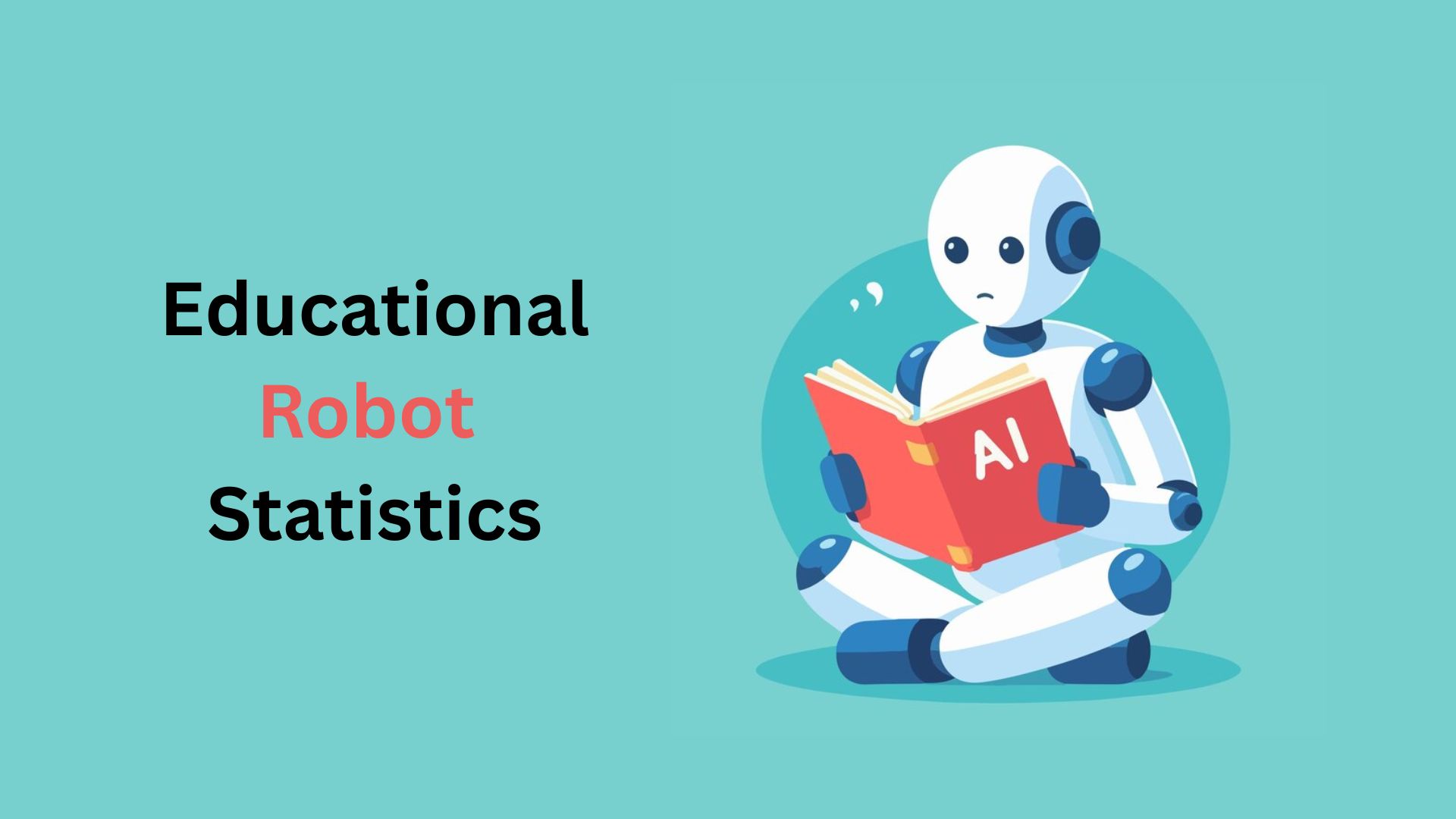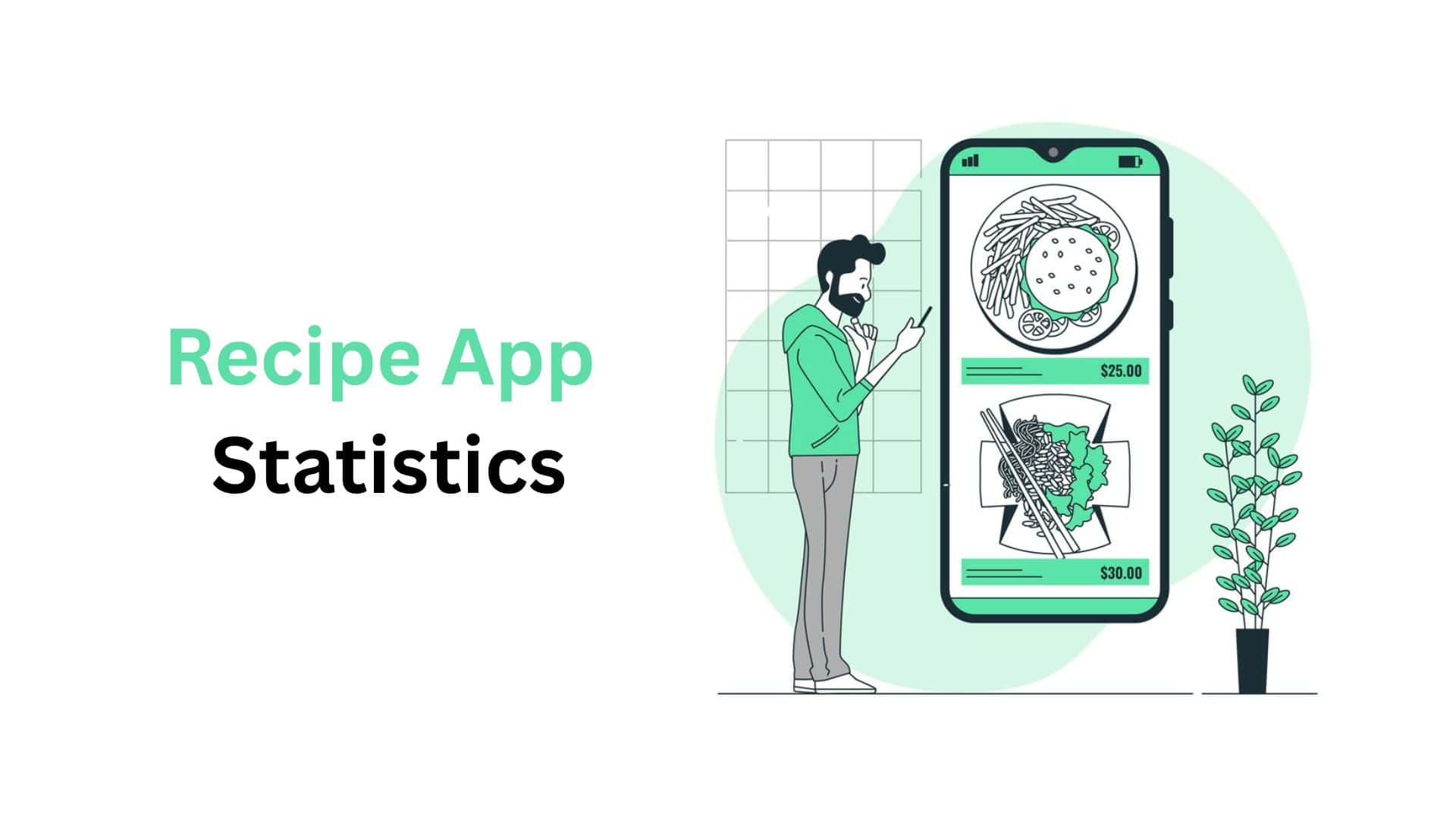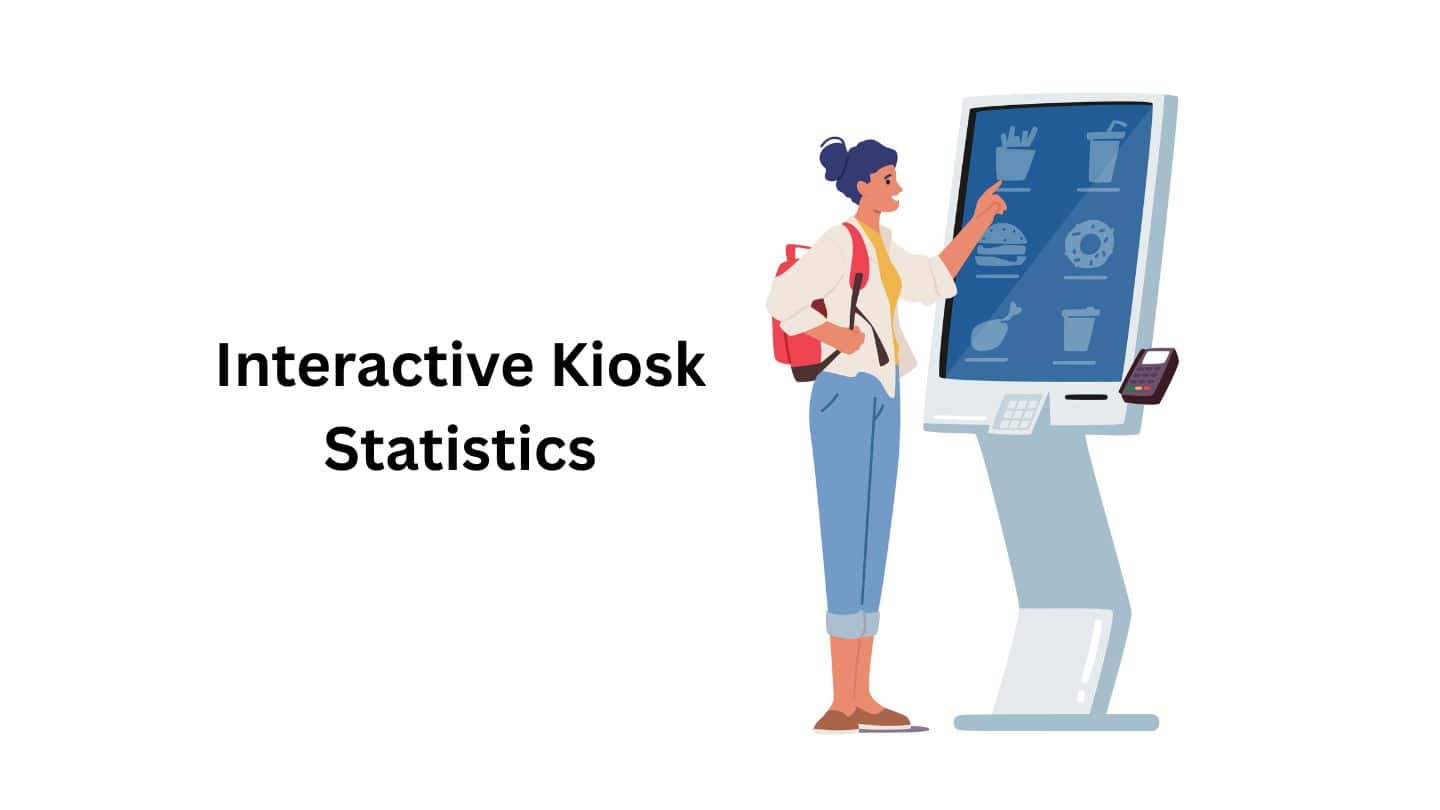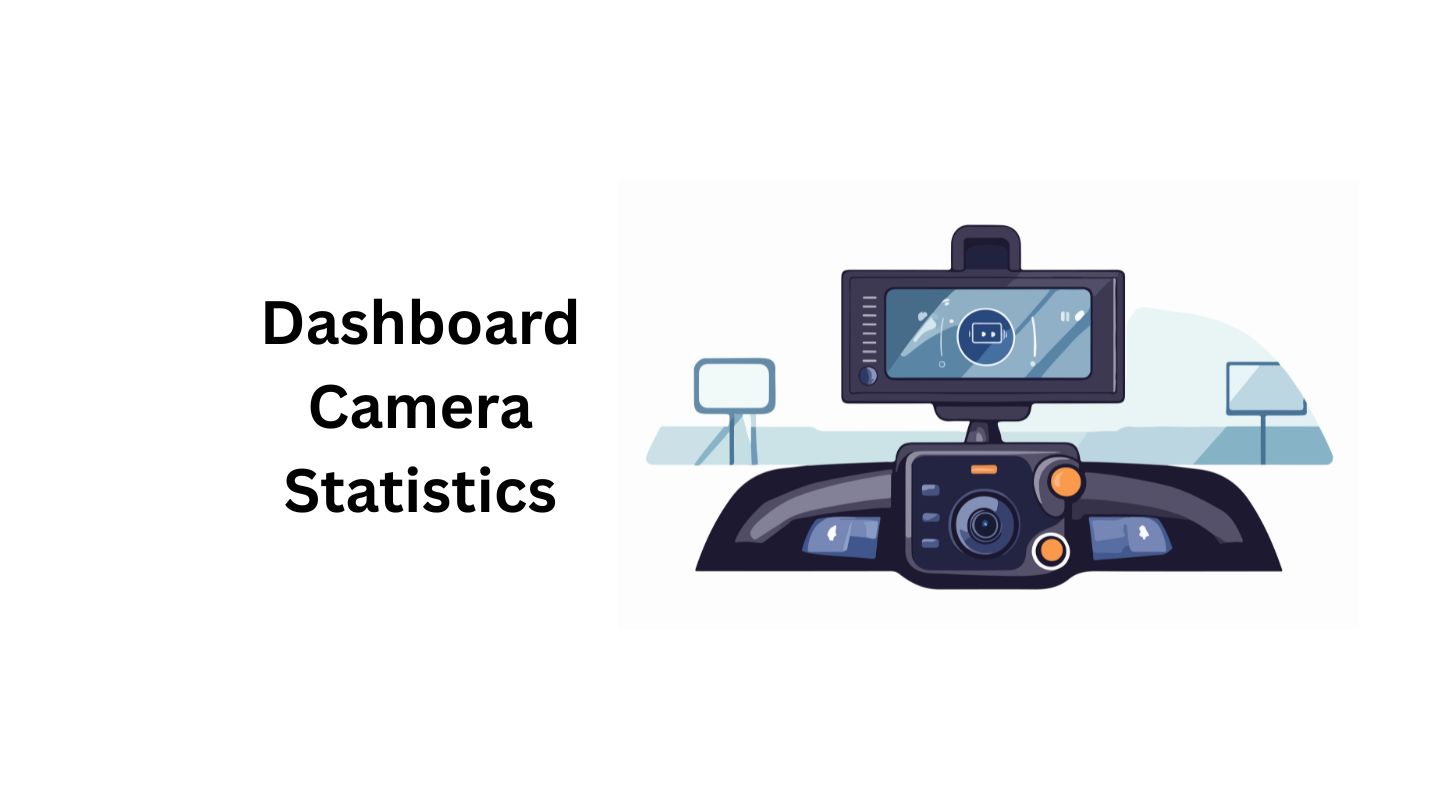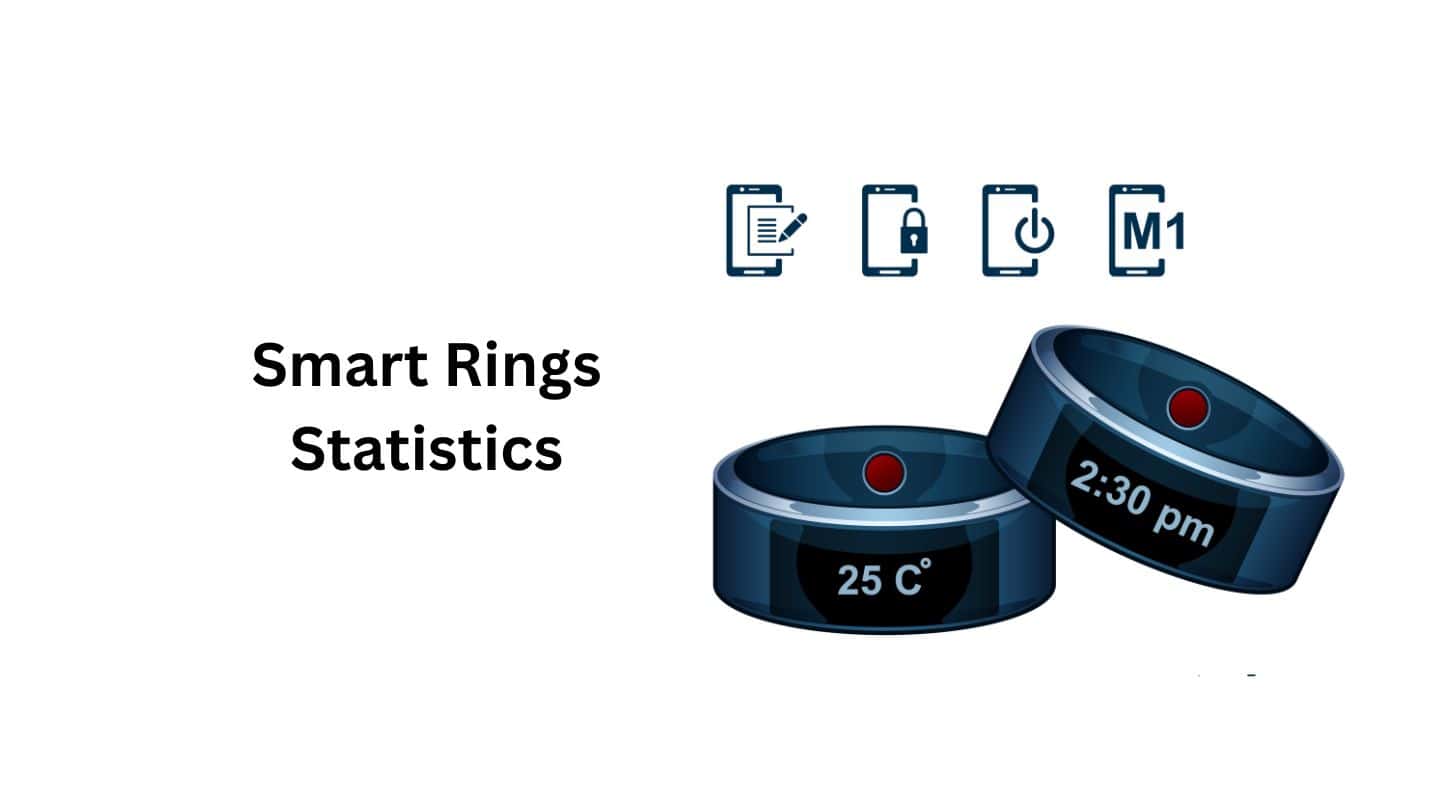Educational Robots Statistics By Revenue, Demographics, Popularity And Product Launches

Updated · Apr 21, 2025


TABLE OF CONTENTS
- Introduction
- Editor’s Choice
- General Educational Robots Statistics
- Educational Robots Revenue Statistics
- By Type
- Usage of Educational Robots Statistics By Demographics
- Educational Robots Statistics By Application Market
- Usage of Educational Robots Statistics By Teaching Segment
- By Graduate Faculty
- Popular Educational Robots Statistics of 2025
- Educational Robotics Market Statistics in China
- Product Launches of Educational Robots
- Key AI Technologies in Educational Robotics
- Conclusion
Introduction
Educational Robots Statistics: Educational robots are gaining popularity in classrooms and learning centers worldwide. They assist students in learning subjects such as math, science, and coding by making the process fun and interactive. These robots make learning more engaging and enjoyable. As technology improves, more schools use robots to make lessons exciting and easier to understand. The demand for educational robots has grown in recent years, especially with the rise of online learning and smart classrooms.
This article shares key statistics about how educational robots are being used, which age groups benefit the most, and what the future might look like. Understanding these numbers can help teachers, parents, and schools make better decisions about using robots in education.
Editor’s Choice
- The global educational robot market will likely grow to USD 1.64 billion by 2025.
- Educational Robots Statistics show that the market is expected to rise by about 28.8% annually from 2025 to 2030, reaching around USD 5.84 billion by 2030.
- Asia Pacific is expected to grow the fastest, with a yearly growth rate of about 23.06% in educational robot usage.
- Schools are using educational robots more because of the increased focus on STEM subjects (science, technology, engineering, and math).
- Robots that look and act like humans (humanoid robots) are predicted to grow quickly, with a yearly rate of 22.67% from 2024 to 2032.
- Software used in educational robots is also growing fast and is set to increase at 22.38% per year.
- In 2023, North America made up 37% of the global market, helped by strong schools and tech investment in education.
- Asia Pacific is again expected to lead, with a yearly growth rate of 23.06% between 2024 and 2032.
- In the same year, non-humanoid robots made up 62% of market revenue, mainly because they cost less and are easier to use for STEM learning.
- Online learning is becoming more common, which is helping educational robots become more popular.
- The market could grow to around USD 7.77 billion by 2032, with an average yearly growth of 21.34% from 2023 to 2032.
General Educational Robots Statistics
- Although the phrase “educational robotics” has become more popular in recent years, the idea originated in 1969 when Seymour Papert created the Turtle robot.
- The Turtle robot, built using the Logo programming language, was one of the first tools to teach kids programming and thinking step by step.
- Its success even influenced Lego, which started creating programmable building blocks after losing its building block patent.
- These new LEGO products let children build and code simultaneously, helping them learn modern tech skills.
- Around the same time, companies like Robolink, Hanson Robotics, Modular Robotics, Primo Toys, and Engino launched similar educational robots.
- Income from humanoid robots is expected to be twice as high as that from non-humanoid robots by 2028.
- Educational Robots Statistics further show that universities and colleges hold about 35% of the educational robot market.
- A survey shows that around 26.75% of people said they use educational robots as part of their teaching.
- However, 73.25% of respondents have not adopted educational robots as teaching tools.
- When looking at primary school teachers who handle core subjects for grades 1 to 4, about 29.82% shared that they include robots in their lessons.
- The highest use of educational robots was seen among those in teacher education programs, 46.93% of whom said they use these robots in their teaching methods.
- It is predicted that 45% of educational robots will include AI features by 2025, helping create more customized learning experiences.
- By 2026, it is expected that 30% of educational robots will have AR/VR capabilities, enabling students to engage with virtual worlds while programming and controlling the robots.
Educational Robots Revenue Statistics
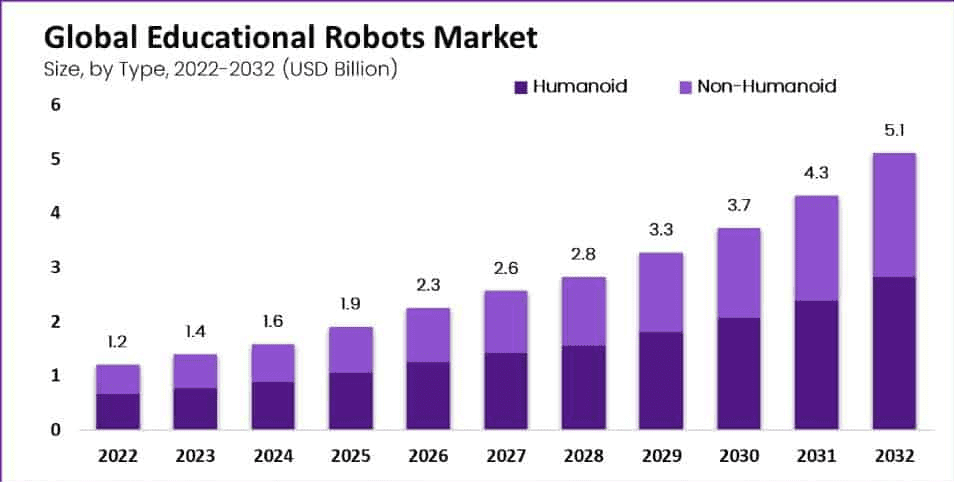 (Source: market.us)
(Source: market.us)
- In 2022, the global market for educational robots generated about USD 1.2 billion in revenue, which increased to around USD 1.4 billion in 2023.
- The upward trend is expected to continue, with estimated earnings of USD 1.6 billion in 2024 and USD 1.9 billion by 2025.
- Educational Robots Statistics estimated that the market may reach about USD 2.3 billion by 2026, and around USD 2.6 billion by 2027.
- The market could generate USD 2.8 billion in 2028 and USD 3.3 billion in 2029.
- By 2030, it is expected to grow to about USD 3.7 billion.
- The market might surpass USD 4.3 billion in 2031, showing strong global demand for educational robots.
- The trend is set to continue, with forecasts predicting a total market size of about USD 5.1 billion by 2032.
By Type
| Year | Humanoid Revenue (USD billion) | Non-Humanoid Revenue (USD billion) |
| 2023 | 0.69 |
0.95 |
|
2024 |
0.85 | 1.07 |
| 2025 | 1.04 |
1.26 |
|
2026 |
1.30 | 1.45 |
| 2027 | 1.60 |
1.69 |
|
2028 |
1.95 | 1.98 |
| 2029 | 2.40 |
2.29 |
|
2030 |
2.95 | 2.64 |
| 2031 | 3.65 |
2.99 |
|
2032 |
3.80 |
3.11 |
Usage of Educational Robots Statistics By Demographics
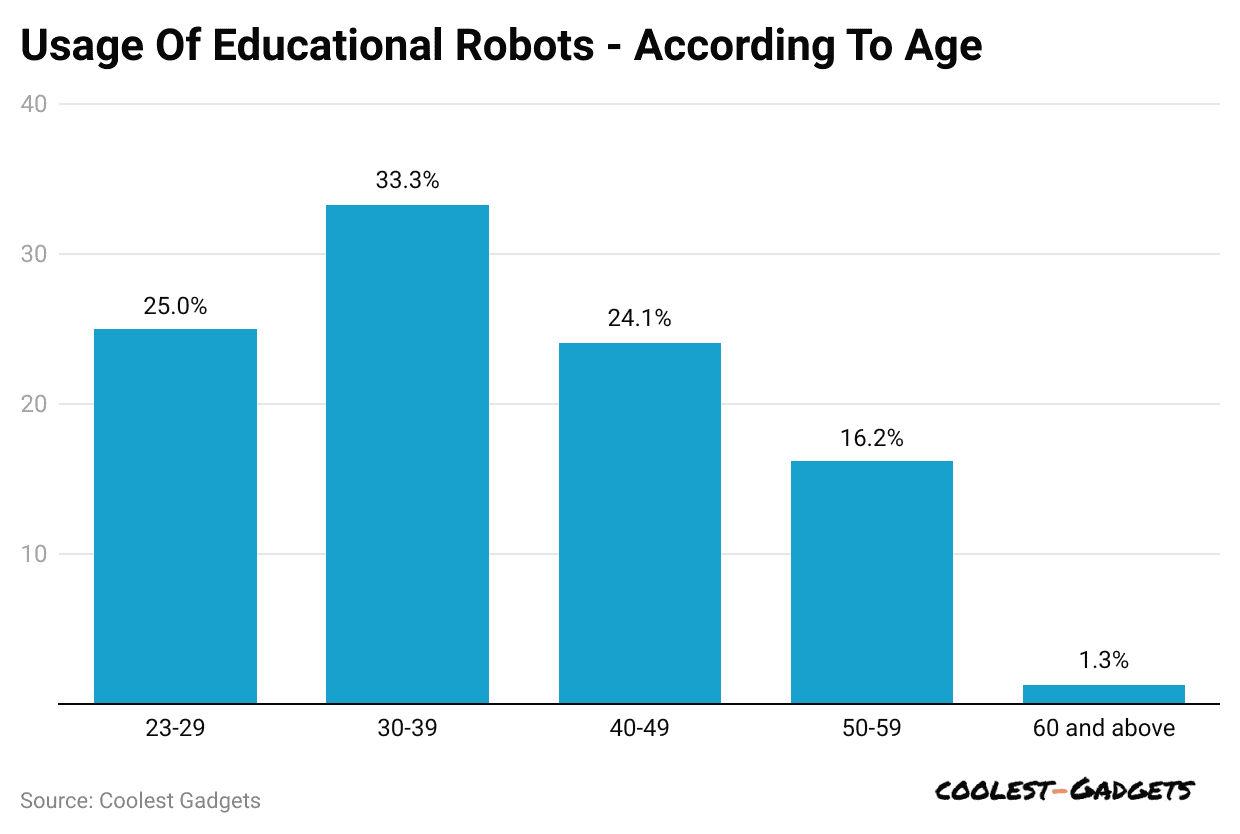 (Reference: scoop.market.us)
(Reference: scoop.market.us)
- The use of educational robots depends on the age of the people surveyed. Around 25.00% of teachers aged 23 to 29 said they use robots in their lessons.
- This number goes up to 33.33% for those between 30 and 39 years old.
- About 24.10% of teachers aged 40 to 49 are using educational robots.
- A smaller group, about 16.23%, of those aged 50 to 59 said they use them, too.
- However, among teachers who are 60 and older, only 1.32% reported using educational robots in their teaching.
Educational Robots Statistics By Application Market
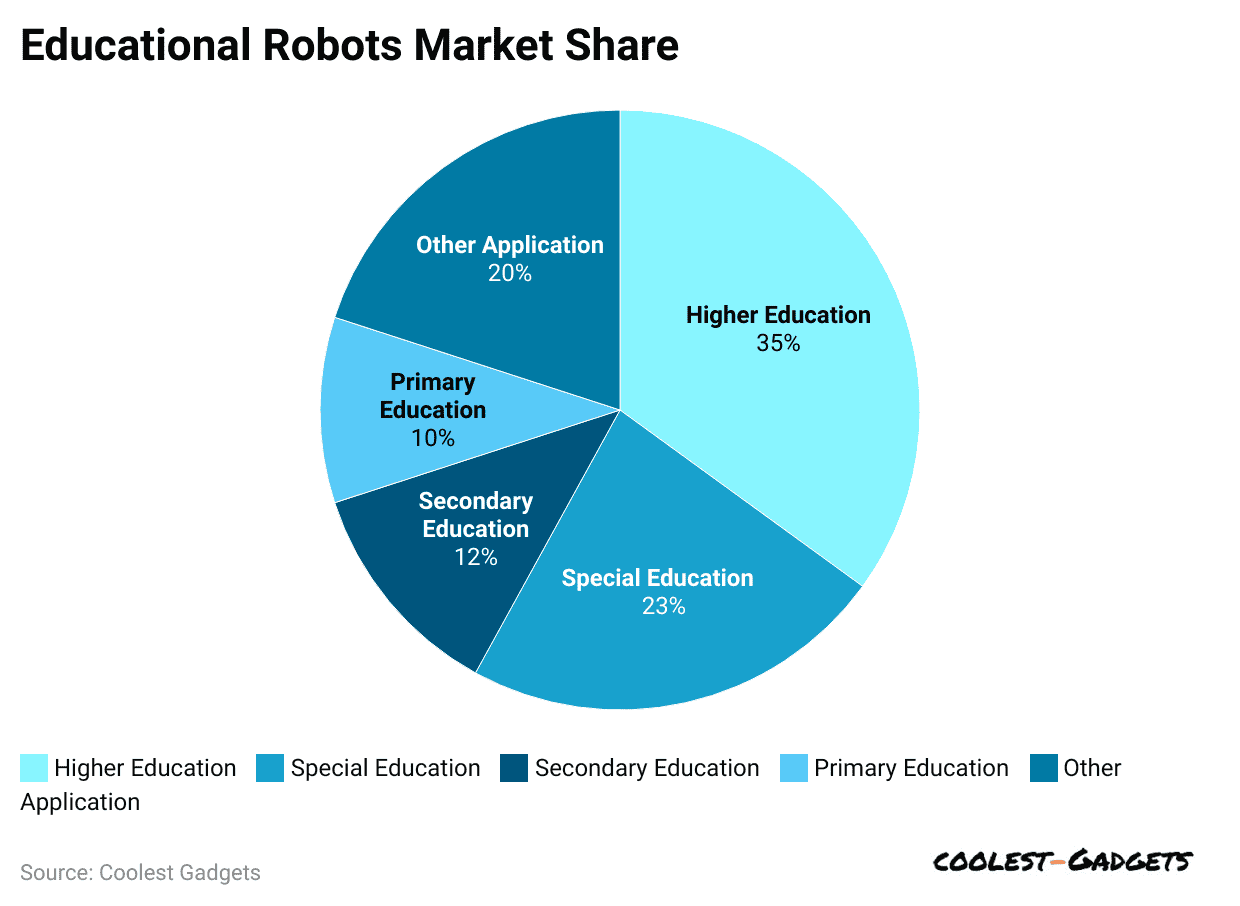 (Reference: scoop.market.us)
(Reference: scoop.market.us)
- Robots are used the most in higher education, making up 35% of the market..
- Special education comes next with 23%, highlighting how helpful robots are for students with special learning needs.
- Secondary education is 12% of the market, while primary education holds 10%.
- The rest of the market, labelled as other applications, is a strong 20%, covering various learning programs and training setups.
Usage of Educational Robots Statistics By Teaching Segment
- Educational Robots Statistics show that 26.75% of teachers already use educational robots.
- Meanwhile, almost 73.25% of teachers said they still do not use robots.
- Among primary school teachers teaching main subjects in grades 1 to 4, around 29.82% said they use educational robots in their classes.
- However, in technical education, only 14.04% use them; in mathematics, just 5.25% do.
Furthermore, other uses of educational robots in teaching different subjects are stated in the table below:
| Subjects | Respondents Share |
| Croatian |
3.50% |
|
Chemistry and Biology |
1.32% |
| History and Geography |
1.32% |
|
German |
1.32% |
| Physics |
1.32% |
|
English |
0.88% |
| Foreign Language |
0.88% |
|
Other subject combinations |
5.70% |
By Graduate Faculty
- According to Educational Robots Statistics, the Faculty of Teacher Education had the highest adoption rate, with 46.93% of respondents using educational robots in their teaching.
- Meanwhile, the Faculty of Science and the Faculty of Humanities and Social Sciences had adoption rates of 14.04% and 12.28%, respectively.
Meanwhile, other uses of educational robots by the graduate faculty segment are stated in the table below:
| Type of Faculty | Respondents Share |
| Organization and Informatics |
6.14% |
|
Mechanical Engineering and Naval Architecture |
2.63% |
| Electrical Engineering and Computing |
2.19% |
|
Transport and Traffic Sciences |
2.19% |
| Department of Physics |
1.75% |
|
Graphics Arts |
1.32% |
| Department of Mathematics |
0.88% |
|
Maritime Studies |
0.88% |
| Pedagogy |
0.88% |
|
Textile Technology |
0.88% |
| Other Faculties |
7.01% |
Popular Educational Robots Statistics of 2025
| Names | Type | Height | Features | Programming | Uses |
| NAO by SoftBank Robotics | Humanoid robot | 58 cm | Facial recognition, speech synthesis, and motion sensors. | Choregraphe (block-based) and Python. |
STEM education, language learning, and social interaction. |
|
Pepper by SoftBank Robotics |
Social humanoid robot | 120 cm | Emotion recognition, speech synthesis, and touch sensors. | Choreographer and Python. | Customer service, education, and companionship. |
| mBot by Makeblock | Educational robot kit | Varies (customisable) | Obstacle avoidance, line following, and LED display. | mBlock (block-based) and Arduino. |
STEM education, coding practice, and robotics competitions. |
|
Codey Rocky by Makeblock |
AI-powered robot | Varies (modular design) | Colour recognition, voice interaction, and IoT capabilities. | mBlock and Python | AI education, coding practice, and IoT projects. |
| Yanshee by Qltyss | Open-source humanoid robot | Varies (customisable) | Facial expressions, speech synthesis, and motion sensors. | Raspberry Pi, Python, and Scratch |
AI education, robotics competitions, and research. |
Educational Robotics Market Statistics in China
- Educational Robots Statistics states that the Chinese educational robot market generated USD 145.6 million in 2024.
- The market is expected to reach USD 624.3 million by 2025, indicating significant growth.
- The market is projected to grow at a compound annual growth rate (CAGR) of 29.1% from 2025 to 2030.
Product Launches of Educational Robots
UGOT by UBTECH
- Launch Date: January 2025 at BETT 2025
- Highlights: UGOT is a multi-mimetic AI educational robot designed for K-12 education. It offers a comprehensive AI education solution, including curriculum, hardware, software, training, competitions, assessments, and a teaching management platform.
- Awards: Won the IF Gold Award and the Red Dot Best of the Best Award in 2024.
KaiBot by Kiwi Education
- Launch Date: Officially launched in early 2025
- Target Age: Designed for children aged 5–15
- Features: AI-enabled learning robot aimed at developing coding skills in children.
- Recognition: Received international recognition before its official launch.
ROSMASTER X3 by Yahboom
- Launch Date: February 2025
- Specifications: Equipped with Mecanum wheels, SLAM lidar, Orbbec depth camera, and voice interaction module.
- Compatibility: Supports Jetson NANO 4GB, Jetson ORIN NANO, Jetson ORIN NX, and Raspberry Pi 5.
- Development Environment: Based on ROS2, suitable for learning the latest version of ROS.
ToddlerBot
- Launch Date: February 2025
- Design: Open-source, ML-compatible humanoid platform designed for loco-manipulation tasks.
- Size and Weight: Compact size of 0.56m and weight of 3.4kg.
- Cost: Total cost under USD 6,000.
Echo-Teddy
- Launch Date: February 2025
- Purpose: A social robot designed to assist autistic students in developing social and communication skills.
- Technology: Utilises Large Language Models (LLMS) for adaptive interactions.
- Platform: Built on a Raspberry Pi platform with custom speech components and basic motor functions.
Key AI Technologies in Educational Robotics
- Natural Language Processing (NLP): Helps robots understand and talk with students, making lessons more interactive.
- Computer Vision: Enables robots to “see” and understand the world around them, improving practical learning activities.
- Reinforcement Learning: Allows robots to learn from student interactions and improve teaching methods.
- Generative AI Models: Help robots create educational content and simulations to assist learning.
- Cloud Robotics: Let’s robots share information and learn from each other, boosting their efficiency and flexibility.
- Emotion Recognition: Allows robots to recognize students’ feelings and provide emotional support during learning.
- Adaptive Learning Algorithms: Tailor lessons to meet the unique needs of each student, ensuring personalized learning.
- Augmented Reality (AR) Integration: Adds digital elements to real-world environments, making learning more engaging.
- Automated Assessment Tools: Give instant feedback to students, helping them track their progress.
- Collaborative Robots (Cobots): Work alongside students, creating hands-on learning experiences.
Conclusion
Educational robots are helping students learn in fun and new ways. They make lessons more exciting and improve thinking and problem-solving skills. These robots can also support teachers by making hard topics easier to understand. As technology grows, more schools may use robots to give students better learning experiences.
In the future, robots could become an important part of every classroom. They are not just machines but helpful tools for learning, working, and growing.
Sources
FAQ.
Educational robots help students learn faster by making lessons fun, hands-on, and easier to understand through real-life practice.
Yes, people of all ages can use educational robots to learn new things in a fun and simple way.
Teachers need special training to use them well and help students learn better with the tools.
Robots can teach math, science, languages, reading, writing, coding, and even music in fun and simple ways.
Robots can help teachers, but cannot fully replace them because students need human care, understanding, and emotions.
Educational robots will become smarter and more common, helping students learn faster through fun, hands-on science, math, and coding lessons at school and home.

Joseph D'Souza started Coolest Gadgets in 2005 to share his love for tech gadgets. It has since become a popular tech blog, famous for detailed gadget's reviews and companies statistics. Joseph is committed to providing clear, well-researched content, making tech easy to understand for everyone. Coolest Gadgets is a trusted source for tech news, loved by both tech fans and beginners.





